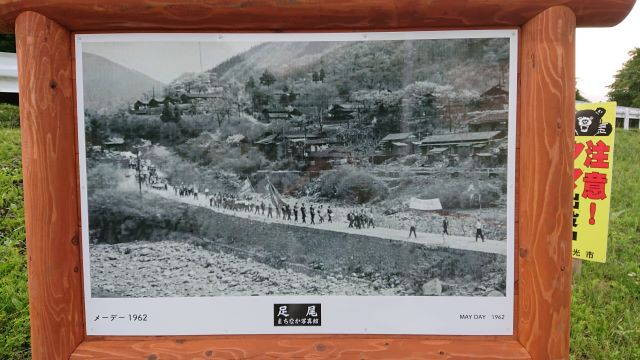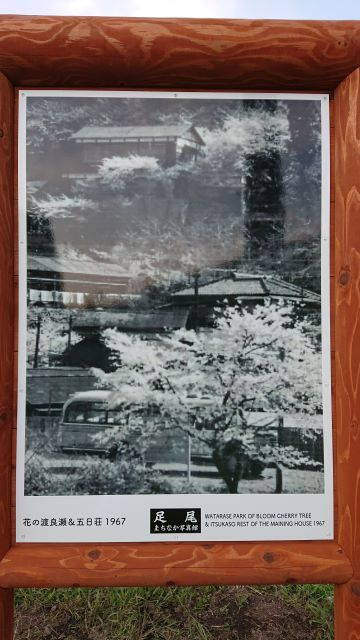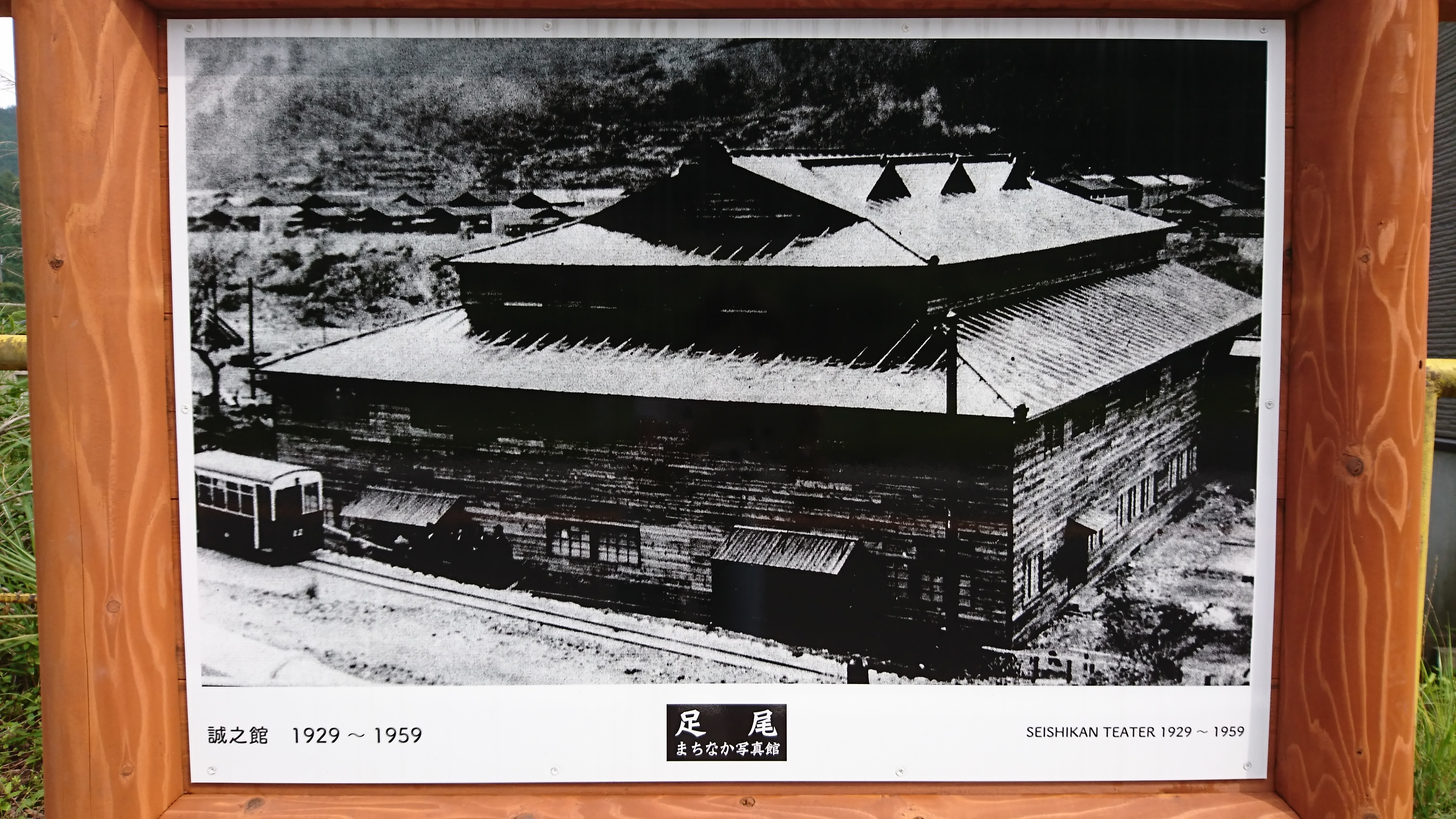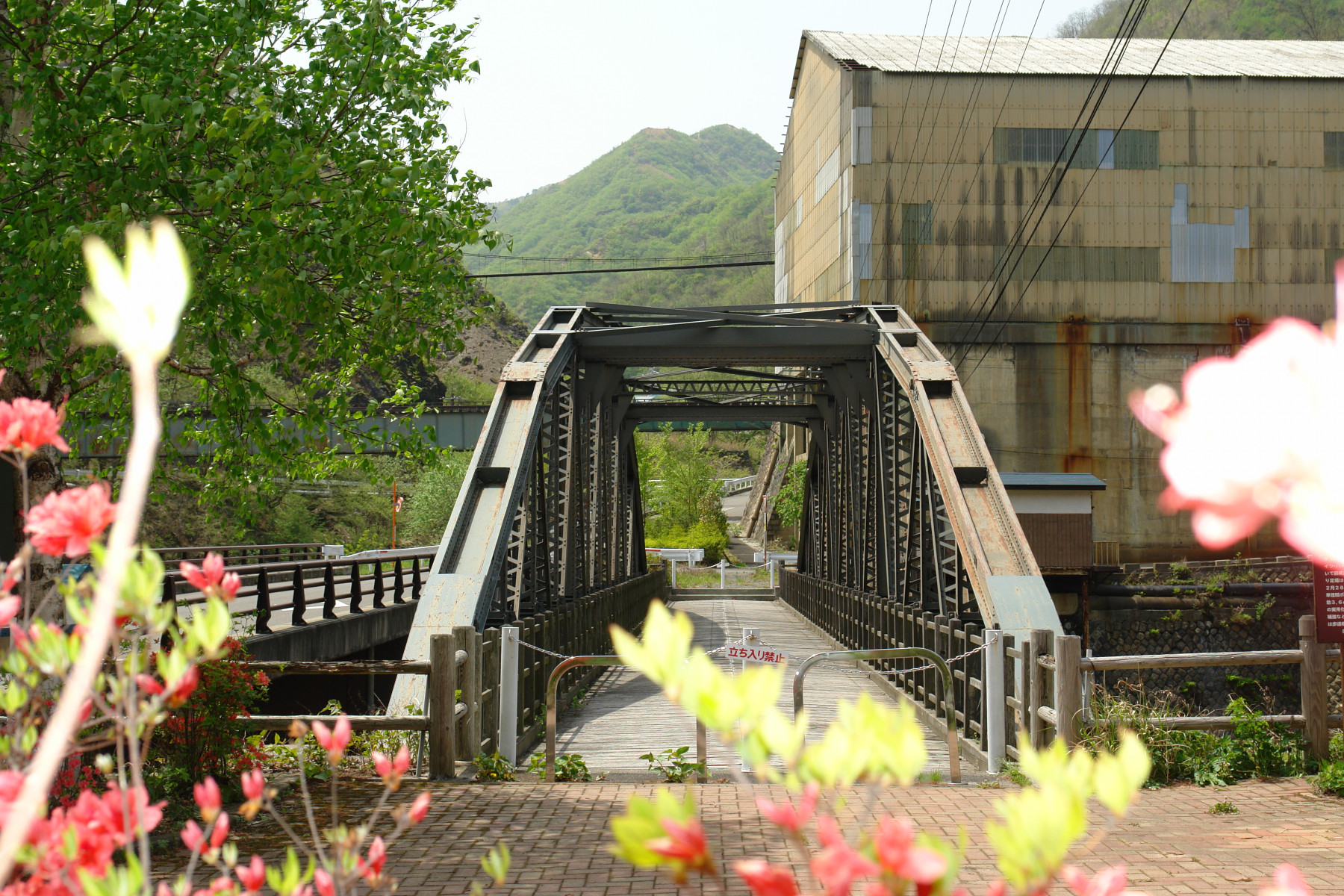産業遺産の見どころ
メーデー MAY DAY1962

足尾銅山は、日本の労働運動の発祥地と言っても過言ではありません。1907年(明治40年)2月4日から6日にかけて、坑夫たちの処遇への不満が爆発した大暴動は、南助松・永岡鶴蔵二人が率いる至誠会によって調整をされますが、鎮圧できず、高崎から軍隊の三個中隊300名が足尾に入るというものでした。古河は鉱員すべてを一端解雇し改めて再募集し給料をアップしました。裁判の結果は、永岡ら至誠会幹部の無罪、古河と検察の敗北となりましたが、足尾から至誠会が撤退することで古河の面目が保たれたようです。
大正8年・10年にも労働争議が勃発しました。時を経て1945年(昭和20年)12月、労働組合が約3500人の組合員を集めて結成され、事務所を足尾銅山鉱業報国会事務所に設けられました。このようにして、職場ブロック別労働組合とその連合体である足尾銅山労働組合同盟会が結成されました。
このような経過から、メーデーが盛んになり戦後の労働者の先達となりました。1958年(昭和33年)に足尾銅山労働組合から発行された足尾銅山労働運動史は、職員で引退後は歴史家として活躍された村上安正氏の大作です。
MAY DAY
It is no exaggeration to say that Ashio copper mine is the birthplace of the Japanese labor movement. From February 4th to 6th, 1907 (Meiji 40), the minors had blown fuse to their unfair treatment. Shiseikai, led by Minami Sukematsu and Nagaoka Tsuruzo, has attempted to settle down the riot. However, it was not possible to meet in on agreement and resulted in 300 military squadrons from Takasaki entering Ashio. Furukawa dismissed all the miners and recruited them again with higher salary. The result of the trial was the acquittal of Nagaoka and other senior members of the Siseikai, and Furukawa and the prosecution has lost the low suit. The dignity of Furukawa was maintained by the evacuation of Shiseikai.
Other labor dispute has taken place in Taisho 8 and 10. Over time, in December 1945 (Showa 20), a labor union was formed by gathering about 3,500 members, and an office was set up at the Ashio Copper Mining Patriot Union Office. In this way, the Ashio Copper Mine Labor Union Alliance was formed, which is an association complex to the labor unions by workplace block. Such transition has made May Day popular and the miners in Ashio became a pioneer of postwar workers.
The story is recorded in the masterpiece; The History of the Ashio Dozan Labor Movement (published by the Ashio Dozan Labor Union, 1958) written by Mr. Yasumasa Murakami, who was an oral member of the Ashio labor union and was active as a historian after his retirement.
花の渡良瀬&五日荘 WATARASE PARK OF BLOOM CHERRY TREE & ITSUKASO REST OF THE MAINING HOUSE 1967

ここ渡良瀬の地は、日光山開山の祖である勝道上人が、ある時粟の穂を加えてやって来る白ねずみの後を追って足尾に入ったされ際に白ねずみは祠に入ってしまい、上人は川を渡るのに困惑していると大蛇が現れて橋になったとの謂れから波之利大黒天祀ったされています。また、渡りやすい瀬を見つけて渡ったので渡良瀬と命名されたともいわれています。788年には天台宗宝増寺がありました。1688年から1704年のの元禄年間になると本寺を現在の赤沢に移し、渡良瀬は別院となり、明治元年に現在の赤沢に本堂が建替えられました。明治28年の日清戦争の戦勝記念に渡良瀬川左岸沿いに桜が植樹され、これがきっかけで桜の名所になり歌にまで歌われるようになりました。
大正期に入ると社宅が建ち始め、銅山専用の購買会や農園が作られ、大正5年には測候所も作ら昭和48年5月まで観測されました。昭和4年になると二階建ての木造建築と浴場が建てられ五日荘と命名されました。五日荘は、古河市兵衛の明治36年の命日で、二十七回忌に当たります。お風呂に入って寛ぐことの出来るちょっとしたヘルスセンターです。
WATARASE PARK & ITSUKASO
It is said that one day, Shodo Shonin, the founder of Mt. Nikko, followed a white rat that came with an ear of millet in its mouth and entered here Watarase in Ashio. The white rat entered the shrine, and when Shodo Shonin was having trouble crossing the river, a giant snake appeared and transformed into a bridge, which is why Hashiri Daikokuten was enshrined. In 788, the Tendai Sect's Hozo-ji Temple was located here, and during the Genroku era (1688-1704), the main temple was moved to the present Akasawa location, and Watarase became a separate temple, with the main hall being built in the present Akasawa location in the first year of Meiji (1868-1912). The building was replaced with a new one. In 1895, cherry trees were planted along the left bank of the Watarase River to commemorate the victory in the Sino-Japanese War, and this led to the area becoming famous for its cherry blossoms, which were even sung about in songs.
In the Taisho Period (1912-1926), company housing began to be built, and a copper mining purchasing department and farms were also established. In 1916, a weather station was built, and observations were made until May 1973. In 1929, a two-story wooden building and bathhouse were built and named Itsukaso. It is a little health center where you can take a bath and relax.
鶴屋&泉屋 TURUYA THE HOTEL OF FOREIGNERS STAYED THE LATE OF EDO~1934.8&IZUMIYA COOKING HOTEL1889~2005

鶴屋は鍋島藩士鶴島家の鶴島チカが、幕末に経営を始めました。長女カネが二代目女将、婿の清四郎は郡会議員、孫の茂は古河鉱業の技師。次女の徳子は今市の現たまり漬け上澤味噌醸造元上澤慎一郎へ嫁ぎ、上澤家は、明治22年本山鉱山神社建立の際に水鉢を奉納しています。
1872(明治5)年に工部省お雇いゴットフリー、1873(明治6)年に政府法律顧問ブスケ、1880(明治13)年、1873(明治17)年に英国外交官アーネスト・サトウが宿泊しています。鶴屋も泉屋も外国人用の離れがあったそうです。
鶴屋は昭和9年8月に周辺一帯と共に蔵だけ残して焼失してしまい、以降は泉屋が大きな役割を果たしてきました。
泉屋は明治22年の創業で、本山賄の神山兼吉が立ち上げましたが、本人のやる気が削がれ段々古河の信用を無くしていったようです。のちに泉屋も関塚一族の長男暢一郎に引き継がれていきました。泉屋は、江戸時代の足尾陣屋敷地内跡に建てられたようです。
TURUYA -1934.8 & IZUMIYA 1889-2005
Tsuruya was started by Chika Tsurushima, a member of a feudal lord family of the Nabeshima clan, at the end of the Edo period. The eldest daughter Kane became the second proprietress, the son-in-law Seishiro Shigeru was a member of the county council, and the grandson Shigeru was an engineer of Furukawa Mining. The second daughter, Tokuko, married Shinichiro Uesawa, the former brewer of Uesawa Miso, who currently runs a Tamari pickles business in Imaichi. The Uesawa family dedicated a water pitk when the Honzan Mine Shrine was built in 1902.
Gottfree who was hired by the Ministry of Industry, government legal adviser Busuke, and British diplomat Ernest Sato stayed at the Tsuruya hotel in 1872, 1873, and 1880 and 1873 selectively. Both Tsuruya and Izumiya seemed to have separated rooms for foreigners.
Tsuruya was burnt down in August 1934, leaving the warehouse with the surrounding area, and Izumiya has played a major role as a hotel since then.
Izumiya was founded in 1887 and was launched by Kenkichi Kamiyama, who is a scholar of Honzan, however he gradually lost trust from Furukawa was as his motivation for business diminished over time. Later, Izumiya was taken over by the eldest son of the Sekizuka clan, Ichiro. Izumiya seems to have been built on the site of Ashio group’s mansion during the Edo period.
誠之館 SESHIKAN TEATER1929~1959

昭和30年の中才は、浄水関係者の社宅が184戸、900人、町部61戸、262人を数えていました。
誠至館は、中才の西端の中才浄水中間付近に足尾銅山の劇場兼大集会施設として昭和4年に建設されました。
全山の友子取立式、鉱夫組合や精神団体連合会、後の鉱業報告会の会合を始め、銅山主催の大相撲、芝居の公演や映画会などに広く使用されました。芝居では歌舞伎や新派の立役も来演しています。
戦後は、1945(昭和20)年12月には、足尾銅山労働組合同盟会の結成大会に使用され、以後も年次組合大会の会場になりました。昭和30年以降に坑内に社外組夫を導入しましたが、その宿舎に転用され飛島建設の下請けが入居していました。昭和34年失火のため全焼してしまいました。足尾は、不思議と劇場という劇場が次々と焼失しています。
ESHIKAN TEATER 1929-1959
At Nakasai in 1955, the number of company housing related to water purification was 184 with 900 residents, and 61 with 262 residents in the town. The Seishikan was built in 1945 as a theater/large community hall of Ashio Copper Mine, near Nakasai water purification facility at the western end of the Nakasai.
The facility was widely used for Zenzan’s Tomoko Toritate ceremonies, miners' unions, spiritual groups associations, later mining debrief meetings, mine-sponsored sumo wrestling match, theater performances and movie shows. Kabuki and Tachiyaku were also performed in the theatre.
After the war, in December 1945, the theatre was used for the formation tournament of the Ashio Copper Mine Labor Union Alliance, and it has been the venue for the annual group tournament since then. After 1955, an outsourced miners were introduced in the mine, but the venue was diverted to the dormitory for them and a subcontractor of Tobishima Corporation occupied the place. The theatre burned down due to a misfire in 1959. Every theaters in Ashio have been mysteriously burned down since then.
C12重連 C12 DUBLE HEADING1969

みなさんご存じのトロッコ列車で有名なわたらせ渓谷鐡道は、もともと足尾銅山の鉱石などを運ぶ鉄道として今から100年以上まえに開通しました。
現在は廃止されましたが、間藤駅から先には貨物専用の足尾本山駅がありました。その本来の終点まで全通したのが1914(大正3)年8月26日で、その当時は足尾鐡道という名前の私鉄でしたが、1918(大正7)年6月1日に国によって買収され国鉄の足尾線となり、後にJR東日本の路線時代を経て今は第三セクターの「わたらせ渓谷鐡道」となりました。もともと私鉄としてスタートした路線であり、線路の規格も低く建設されていたので、大きな蒸気機関車は走れませんでした。しかし、鉱山全盛時代の貨物輸送は大量であり、苦肉の策として国鉄制式蒸気機関車として小さいクラスであったC12形蒸気機関車が重連運転(2両の機関車)で長い貨物列車をけん引して走っていました。
この光景は、国鉄足尾線時代の名物であり、SLブーム全盛期には多くのレールファンが沿線でカメラをかまえて撮影していました。1970(昭和45)年9月30日には蒸気機関車が足尾線から引退し、現在でもトロッコ列車けん引に活躍しているDE10形ディーゼル機関車へと置き換わりました。なお、貨物輸送は国鉄からJR東日本へと承継された1987年(昭和62年)に廃止されています。
C12 DUBLE HEADING
Watarase Gorge railroad, famous for its trolley train, originally opened more than 100 years ago to carry ore from Ashio Copper Mine.
The now-defunct Ashio Honzan station was located beyond Mato station and was used exclusively for freight. It was a private railroad named "Ashio railroad" at that time, but it was bought by the national government on June 1, 1918, and became the Ashio line of Japan National Railways, and later became the Watase Gorge railroad of the third sector after the period of JR East. The line was originally started as a private railway, with the standard of the track different from that of national railway, so big steam locomotives could not run on the line.
However, the freight transportation in the heyday of mining was massive, and as a desperate measure, C12 class steam locomotives, which were the smallest class of steam locomotives in the Japanese National Railways system, were used to tow long freight trains with two locomotives.
This scene was a famous sight during the JNR Ashio Line days, and during the height of the SL boom, many railroad fans took pictures of the steam locomotives with their cameras along the line. It has been replaced by a new one. Freight transportation was discontinued in 1987 (Showa 62), when JNR was succeeded by JR East.


